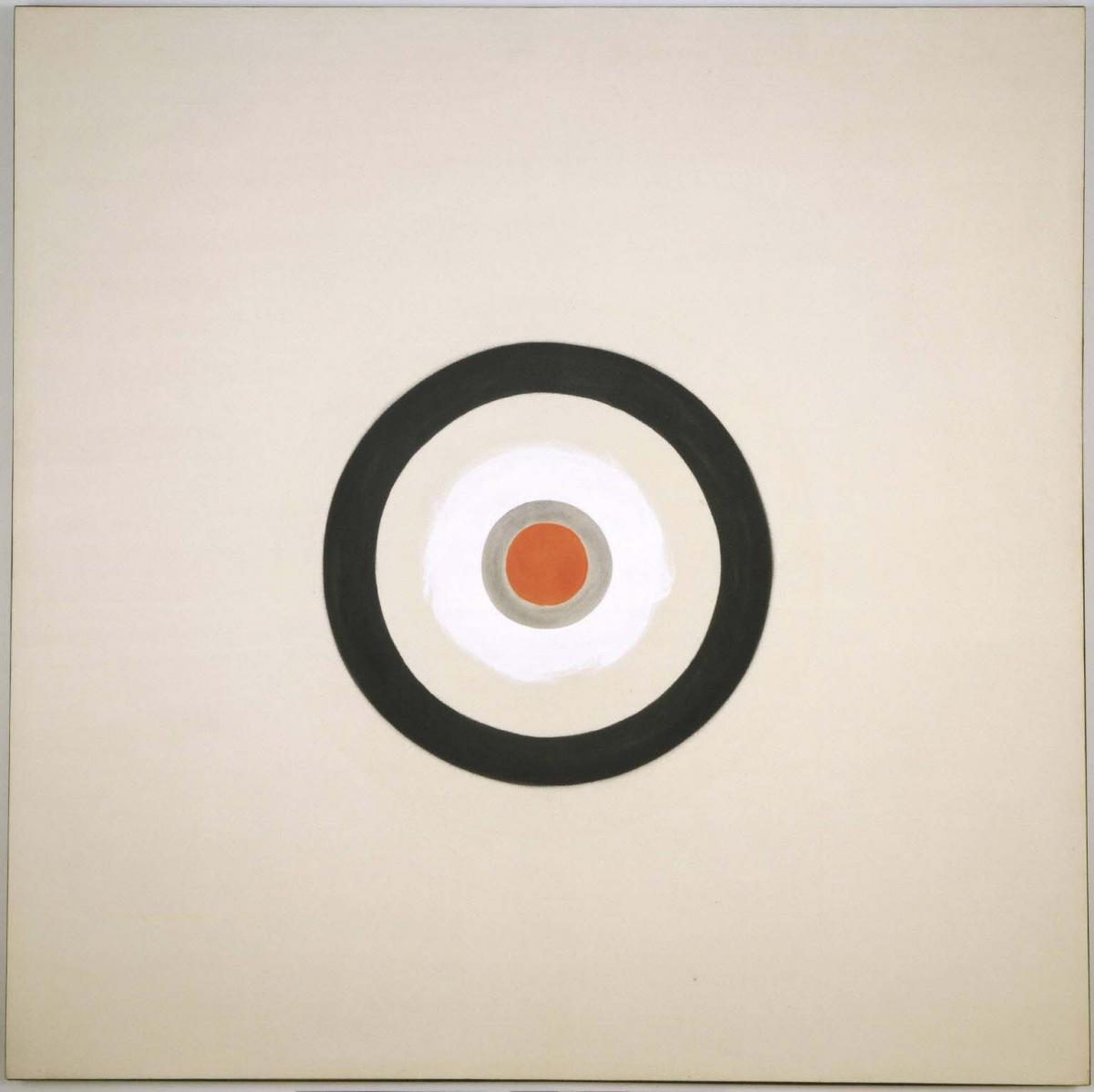Cycle
Kenneth Noland ( 1960 )

Kenneth Noland’s most famous and recognizable series of paintings are known as his Concentric Circle series. Noland began experimenting with this motif—a series of concentric circles/rings of color—around 1958. Always central in Noland’s paintings were his concerns for color. By 1960, the year he painted Cycle, Noland was concentrating on vibrant, energetic color, using a greater array of highly-keyed hues and removing the vestiges of brushwork.
Noland circles have often been compared to Jasper Johns’s Targets, for their similar design; however this is one fundamental difference. Johns based his work on existing objects and images, while Noland’s work was entirely based on experience. In Cycle, Noland has left the large canvas—almost six square feet—relatively free of color; however he catches the eye with the one vibrant spot of orange, drawing the viewer into the painting, which was typical of Noland’s earlier circle paintings, where the center served as the anchor for each painting.
When Noland first began painting and exhibiting his circle paintings, they were almost instantly well received by the critics, who said they signaled a new type of artist, which departed from the heavy-handedness of earlier paintings of the previous decade. These paintings ranged in mood and emotion, size and color. Though Noland never indicated his own sentiments, his works always elicited a visceral response from the viewer.